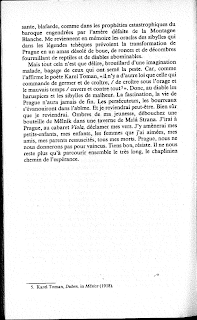The Spectre Haunting Europe :
Debt Defaults, Austerity, and Death of the “Social Europe” Model
Debt Defaults, Austerity, and Death of the “Social Europe” Model
A spectre is haunting Europe: the illusion that Latvia’s financial and fiscal austerity is a model for other countries to emulate. Bankers and the financial press are asking governments from Greece to Ireland and now Spain as well: “Why can’t you be like Latvia and sacrifice your economy to pay the debts that you ran up during the financial bubble?” The answer is, they can’t – without an economic, demographic and political collapse that will only make matters worse.
(... l'article mérite vraiment le déplacement ...)
The EU’s creditor nations and banks are seeking to resolve the crisis in way that will not cost them much money. The best hope, it is argued, given the inability of the crisis countries to depreciate their currencies, is “internal devaluation” (wage austerity) on the Latvian model. Bankers and bondholders are to be paid out of EU/IMF bailout loans.
The problem is the austerity imposed by existing debt levels. If wages (and hence, prices) decline, the debt burden (already high by historical standards) will become even heavier. This is what the United States suffered in the late 19th century, when the price level was driven down to “restore” gold to its pre-Civil War (and hence, pre-greenback) price. Presidential candidate William Jennings Bryan decried crucifying labor on a cross of gold in 1896. It was the problem that England earlier experienced after the Treaty of Ghent ended the Napoleonic Wars in 1815. Aside from the misery and human tragedies that will multiply in its wake, fiscal and wage austerity is economically self-destructive. It will create a downward demand spiral pulling the EU as a whole into recession.
The basic problem is whether it is desirable for economies to sacrifice their growth and impose depression – and lower living standards – to benefit creditors. Rarely in history has this been the case – except in a context of intensifying class warfare. So what will Latvians, Greeks, Irish, Spaniards and other Europeans do as their labor is crucified by “internal devaluation” to shift purchasing power to pay foreign creditors?
What is needed is a reset button on the EU’s economic and fiscal philosophy. How Europe handles this crisis may determine whether its history follows the peaceful path of mutual gain and prosperity that economics textbooks envision, or the downward spiral of austerity that has made IMF planners so unpopular in debtor economies.
Is this the path that Europe will embark on? Is it the fate of the Jacques Delors’ project of a Social Europe? Was it what Europe’s citizens expected when they adopted the euro?
There is an alternative, of course. It is for creditors at the top of the economic pyramid to take a loss. That would restore the intensifying GINI income and wealth coefficients back to their lower levels of a decade or two ago. Failure to do this would lock in a new kind of international financial class extracting tribute much like Europe’s Viking invaders did a thousand years ago in seizing its land and imposing tribute in the form of land. Today, they impose financial charges as a post-modern neoserfdom that threatens to return Europe to its pre-modern state.











